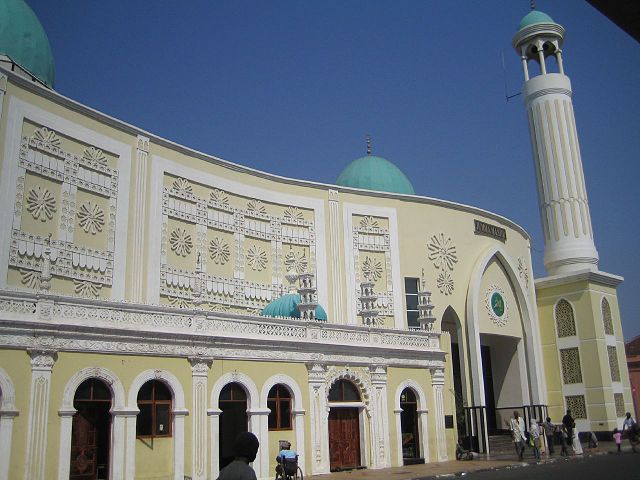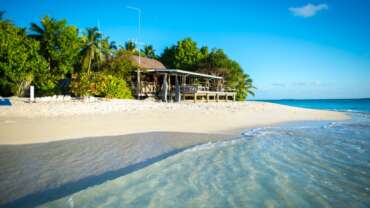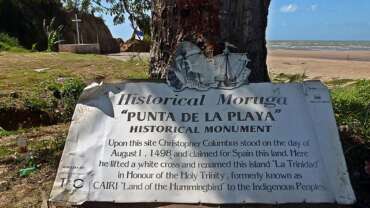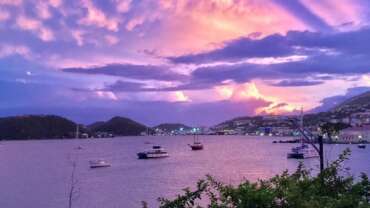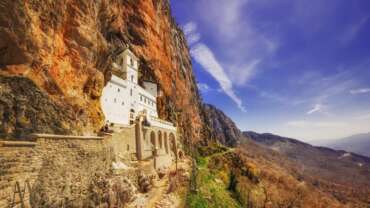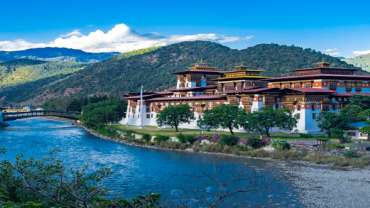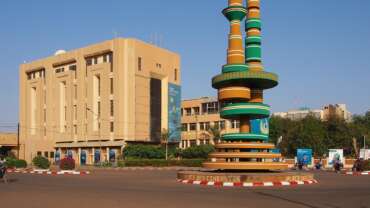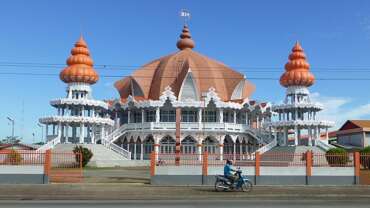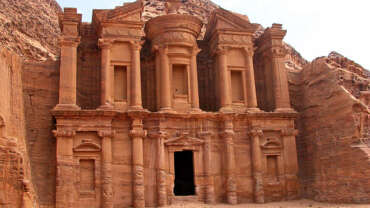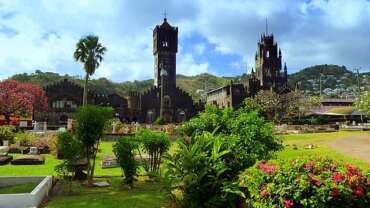Mozambique - Come to where it all started!
Mozambique is a southern African nation whose long Indian Ocean coastline is dotted with popular beaches like Tofo, as well as offshore marine parks. In the Quirimbas Archipelago, a 250km stretch of coral islands, mangrove-covered Ibo Island has colonial-era ruins surviving from a period of Portuguese rule. The Bazaruto Archipelago farther south has reefs which protect rare marine life including dugongs.
History of Mozambique
During the colonial era Mozambique’s history was written as though it had begun with the arrival of the Portuguese, but the people of this region had developed complex communities based on agriculture, cattle raising, mining, crafts, and trade long before the first small groups of Portuguese settlers arrived in the 16th century. Archaeological and historical research since 1950 has begun to reintegrate Mozambique’s past with that of East, Central, and Southern Africa. For a consideration of Mozambique in its regional context, see Southern Africa.
Precolonial period
Early settlement
From at least the 3rd century CE, Iron Age people who practiced agriculture and kept both cattle and small livestock moved into Mozambique as part of the migration of Bantu speakers from west-central Africa toward the south and east. These people had mastered iron technology and combined the cultivation of some grains with knowledge of root and tree crops. In the process they created such sustained population growth that they needed to expand their territory. In a slow but fairly steady process, one branch of Bantu speakers moved east toward the Indian Ocean and then south along the coast, and another moved more directly south-southeast into the Zimbabwe plateau and highlands of western Mozambique.
The characteristic social unit was the extended patrilineal household headed by an elder male and consisting of his wives, their unmarried children, adult sons, and the sons’ families. Although both social and labour organization varied throughout the area, women were usually responsible for child care, cultivation, gathering of food crops, and food preparation, whereas men were involved in cattle keeping, hunting, toolmaking, and a range of crafts.
Toward the end of the 1st millennium CE, groups of households called nyika had emerged in south-central Mozambique as social units under the authority of a chief and chiefly household. In the 10th century a settlement known as Mapungubwe, which incorporated many nyika, developed in the upper reaches of the Limpopo River. It was the earliest of the settlements featuring stone enclosures, or zimbabwes.
The rise of the Zimbabwe Civilizations
The groups on the Zimbabwe plateau expanded their herds and moved between the plateau and the surrounding Mozambican lowlands in pursuit of seasonal pastures, although the tsetse fly, which causes sleeping sickness, was present in the region. The region’s economy was rooted in agriculture and cattle keeping, but its social and political organization became more complex with the development of local industries and trade, specifically the mining of gold, copper, and iron ore and the development of salt pans, tool forges, and potting industries. The civilization of Great Zimbabwe, which dominated the region politically from the mid-13th to the mid-15th century, controlled mining and trade.
The Zimbabwe settlement at Manekweni, about 30 miles (50 km) from the Indian Ocean in southern Mozambique, replicated in miniature the social and settlement patterns of the highland interior. Manekweni was a centre for agriculture, cattle keeping, and the gold trade from about the 12th to the 18th century.
From roughly the 10th to the 18th century, Great Zimbabwe and the area of Central Africa around Lake Kisale (in present-day Katanga province of the Democratic Republic of the Congo) were the region’s centres of production and intra-African trade. Beginning in at least the 1st millennium, however, people of this region traded with various non-Africans. The earliest and most important external trade link for Mozambique was with Middle Eastern and South Asian peoples who traded beads and cloth for gold across the Red Sea and the Indian Ocean.
By the 14th century, African Arab, or Swahili, trade cities were flourishing along the coast from Somalia in the north to Kilwa in what is now southern Tanzania. Smaller Swahili sultanates developed along the northern coast of Mozambique as far south as Angoche. A series of markets had arisen throughout the region by the 16th century, sustained by intraregional trade in raw materials and long-distance trade in gold, copper, ivory, and slaves.
Arrival of the Portuguese
The voyage of Vasco da Gama around the Cape of Good Hope into the Indian Ocean in 1498 marked the European entry into trade, politics, and society in the Indian Ocean world. The Portuguese gained control of the Island of Mozambique and the port city of Sofala in the early 16th century, and by the 1530s small groups of Portuguese had pushed their way into the interior, where they set up garrisons and trading posts at Sena and Tete on the Zambezi River and tried to gain exclusive control over the gold trade. The Portuguese attempted to legitimate and consolidate their trade and settlement positions through the creation of prazos (land grants) tied to European occupation. While prazos were originally developed to be held by Europeans, through intermarriage they became African Portuguese or African Indian centres defended by large African slave armies known as Chikunda. Most prazos had declined by the mid-19th century, but several of them survived and strongly resisted Portuguese domination until the last quarter of the 19th century.
The Portuguese were able to wrest much of the coastal trade from Arabs between 1500 and 1700, but, with the Arab seizure of Portugal’s key foothold at Fort Jesus on Mombasa (now in Kenya) in 1698, the pendulum began to swing in the other direction. During the 18th and 19th centuries the Mazrui and Omani Arabs reclaimed much of the Indian Ocean trade, forcing the Portuguese to retreat south. During the 19th century other European powers, particularly the British and the French, became increasingly involved in the trade and politics of the region.
Effects of the slave trade
By the 18th century, slaves had become an increasingly important part of Mozambique’s overall export trade from the East African coast. Yao traders developed slave networks from the Marave area around the tip of Lake Nyasa to Kilwa and the Island of Mozambique. Prazo traders along the Zambezi sold gold and slaves from Zumbo, Tete, and Manica to Portuguese merchants at Quelimane, and Tsonga ivory traders developed routes from the Transvaal region of South Africa and from the Zimbabwe plateau to coastal entrepôts at Inhambane and Maputo. During the 19th century, Mozambicans were sold as slaves in the Portuguese and Brazilian South Atlantic trade, the Arab trade from the Swahili coast, and the French trade to the sugar-producing islands of the Indian Ocean and Madagascar. Although the trade in slaves declined as a result of the mid-19th-century slave-trade agreements between Portugal and Britain, clandestine trade—particularly from central and northern Mozambique—continued into the 20th century.
During the first three decades of the 19th century, the proliferation of military and raiding groups from the conflicts in the northern Nguni heartland southwest of Mozambique had an important impact on southern and west-central Mozambique. Several military groups, offshoots of the emerging Zulu state, invaded Mozambican territory, seizing cattle, hostages, and food as they went. The waves of armed groups disrupted both trade and day-to-day production throughout the area. Two groups, the Jere under Zwangendaba and the Ndwandwe (both later known as Ngoni) under Soshangane, swept through Mozambique. Zwangendaba’s group continued north across the Zambezi, settling to the west of contemporary Mozambique, but Soshangane’s group crossed the Limpopo into southern Mozambique, where it eventually consolidated itself into the Gaza state. In the 1860s a succession struggle between the sons of Soshangane caused enormous suffering in the region and weakened the Gaza state.
Colonial Mozambique
Consolidation of Portuguese control
By the 1880s the Portuguese controlled trade and collected tribute in coastal enclaves from Ibo in the north to Lourenço Marques in the south, but their ability to control events outside those areas was quite limited; that situation, however, was about to change. Increasingly, as neighbours of the Gaza state were raided periodically for refusing to pay tribute, they began to ally themselves with the Portuguese, which the Portuguese both encouraged and exploited. In the 1890s a coalition of Portuguese troops and African armies marched against the state. When the Gaza leadership was finally defeated in 1897, southern Mozambique passed into Portuguese control. Two decades later the Portuguese, who had mounted dozens of military campaigns by that time, directly controlled the Barue of central Mozambique, the African Portuguese of the Zambezi and Maganja da Costa prazos, the Yao of Mataka, the northern Makua chiefdoms, and the northern coastal sheikhdoms of Angoche.
Trade in ivory, gold, slaves, rubber, oilseeds, and a broad range of European goods continued throughout the 19th century. However, European economic interest and influence in the region changed rapidly by mid-century in response to developments in both Africa and Europe. African labour was needed on the sugar plantations and at South African ports and mines after diamonds (at Kimberley in the 1860s) and gold (at Witwatersrand in the 1880s) were discovered. Because of the need for labour, Europeans were determined to gain greater control over tracts of land and their inhabitants at the expense of African leadership. The combined struggle for access to mineral-bearing lands and the labour force to work them fueled the so-called “scramble” in Southern Africa.
Portugal claimed a swath of territory from present-day Mozambique to Angola. Although the Germans, whose territory bordered Mozambique to the north, accepted the Portuguese claims—establishing Mozambique’s northern boundary—British claims to the region contradicted those of Portugal, leading to prolonged negotiations. However, the Portuguese crown was heavily in debt to British financiers, and the small country was no match for Britain’s military; in 1891 Portugal was forced to accept Britain’s definition of Mozambique’s western and southern boundaries.
People of Mozambique
Ethnic groups
The people of Mozambique are ethnically diverse, but ethnic categories are fluid and reflect the country’s colonial history. All inhabitants of the country were designated Portuguese in 1961, and some ethnic classifications such as Makua-Lomwe were created by colonial Portuguese officials themselves. Within the country, in addition to the Makua-Lomwe, live the Tsonga, Sena, Ndau (see Shona), Chopi, Chewa, Yao, Makonde, and Ngoni.
In terms of cultural organization, the Zambezi valley again provides Mozambique’s key marker, roughly dividing groups that trace their heritage according to principles of matrilineality to the north and groups that order themselves along patrilineal lines to the south. In matrilineal groups, authority rests in the senior male of the extended family traced through the female line, whereas in patrilineal groups the senior male is identified through the male line. Throughout the 20th century, however, many matrilineal groups adopted patrilineality and virilocal settlement, with new families settling in a household of the husband’s lineage rather than the wife’s.
Languages
Although Portuguese, the official language, is the main language of only a tiny fraction of the population, it is spoken as a lingua franca by some two-fifths of the country’s inhabitants. Portuguese speakers are strongly concentrated in the capital of Maputo and other urban areas.
The vast majority of Mozambicans speak languages from the Bantu branch of the Niger-Congo language group. Within the Bantu group, Makua, Lomwe, Tsonga, Sena, Shona, and Chuabo are the most widespread languages, but the country has great linguistic and cultural variety because it shares languages with surrounding countries: Swahili with many East African countries, Yao with Malawi and Tanzania, Makonde with Tanzania, the Ngoni and Chewa dialects of Nyanja with Malawi and Tanzania, Shona with Zimbabwe, and Shangaan (a dialect of Tsonga) with South Africa and Swaziland. Similarly, small groups in the far south and throughout the country share Nguni languages (Zulu and Swati) with South African and Zimbabwean peoples as a result of major population movements of the early 19th century. Groups speaking European and Asian languages are largely limited to the port cities of Maputo, Beira, Quelimane, Nacala, and Pemba.
Makua and Lomwe are spoken by almost half of the population and dominate northeastern Mozambique except in two areas: the coastal strip north of the Lúrio River, where Swahili is typically spoken, and a large pocket on the Tanzanian border that is inhabited predominantly by Makonde speakers. Most of the population speaks Yao in the region that extends westward from the confluence of the Rovuma and Lugenda rivers to the border with Malawi, while Nyanja is commonly spoken in the rough triangle from the juncture of the Shire and Zambezi rivers northwest to the border with Zambia. Shona speakers, more than one-tenth of the population, dominate the region between the Save River and the Zambezi valley. South of the Save, Tsonga is spoken by almost one-seventh of the population.
Religion
Prior to independence in 1975, almost one-third of the population was nominally Christian, and a small number were Muslim. Christian missionaries were active throughout the country during the colonial era, and after 1926 the Roman Catholic Church was given government subsidies and a privileged position with respect to its educational and evangelical activities among the African population. Although the Portuguese were generally suspicious of Protestants, Protestant missionaries—Presbyterian, Free Methodist, African Methodist Episcopal, Methodist Episcopal, Anglican, and Congregationalist—remained active, particularly in the northern interior and in the hinterlands of Inhambane and Maputo, providing Africans with alternative medical facilities and boarding schools. A variety of African Independent Churches developed, but, because of official disdain for their activities, they were unlikely to register publicly.
After independence the government, led by the Mozambique Liberation Front (Frente de Libertação de Moçambique; Frelimo), presented conflicting messages regarding religion. Although it confirmed a policy of open and free religious affiliation, Frelimo actively persecuted the country’s more than 20,000 Jehovah’s Witnesses, and its overall political and ideological emphasis discouraged religious expression and organization. By the end of the 1980s, however, Frelimo had changed its approach, and religious organizations began to reemerge as an important popular force.
About one-half of the population now adheres to some form of Christianity, and fewer than one-fifth are Muslims. Although Islamic communities are found in most of Mozambique’s cities, Muslims constitute the majority in only the northern coastal region between the Lúrio and Rovuma rivers. Almost one-fifth of the population claims no religious affiliation.
Art & Culture of Mozambique
The arts
Mozambique has produced some of Africa’s most important writers and artists. From the early 20th century, African writers and journalists published their own newspaper in Maputo—O Africano, later O Brado Africano—which, despite colonial censorship, provided a forum for African intellectuals and writers for many decades. Writers used Portuguese to convey the experience of the colonized and to confirm the validity of African cultural expression. Some of Frelimo’s leading figures, including Marcelino dos Santos and Sérgio Vieira, wrote poetry and encouraged poetic expression as a form of resistance. One of Africa’s best-known poets is José Craveirinha, whose collections of poetry include Chigubo (1964) and Karingana ua karingana (1974; “Once upon a Time”). Other writers in Portuguese include Luís Bernardo Honwana, Mia Couto, Lina Magaia, and Orlando Mendes. Bento Sitoe, the author of Zabela (1983), among other works, used Tsonga as the language of his writings. Since the 1990s new authors have emerged who address women’s experiences in Mozambican society, including Paulina Chiziane and Lília Momplé, whose novel Neighbours (1995) was later published in English as Neighbours: The Story of a Murder (2001).
Mozambique’s small film industry is represented by directors such as Jose Cardoso (Vento sopra do norte [1987; “The Wind Blows from the North”]) and Licino Azevedo (A arvore dos antepassados [1995; “Tree of the Ancestors”]). The country’s best-known film export is Solveig Nordlund’s Comédia infantil (1998; “Nelio’s Story”), a Portuguese, Swedish, and Mozambican coproduction.
The painter Malangatana Valente Ngwenya, commonly known as Malangatana, has gained an international following, as has the sculptor Alberto Chissano. Malangatana and the muralist Mankew Valente Muhumana have inspired the formation of artist cooperatives, particularly around Maputo; among the most prominent of these is the Nucleo de Arte, which operates a gallery and offers workshops throughout the year.
Mozambican popular music combines Western and African influences and includes the work of Alexandre Langa, Xidimingwana, and the Nampula group Eyuphuro. A popular style of music in Mozambique is marrabenta, which originated in the 1950s and was first performed on homemade guitars constructed from oil or gasoline cans and fishing line. The style’s lyrics are often political, though subtly so, and the associated dance is widely performed throughout the country. It developed during the colonial period as a way to criticize the government in a manner that would be nonthreatening and is a common musical form in other African societies. The Portuguese fado style, featuring mournful ballads usually sung by women, is also popular. The xylophone orchestral ensemble, common among the Chopi people, is one of the country’s best-known musical traditions. The National Song and Dance Company, headquartered in Maputo, offers programs drawing from the country’s many musical traditions.
Cultural Life
Mozambique exhibits a great range of cultural and linguistic diversity, sharing cultural traditions with its neighbours in Tanzania, Malawi, Zambia, Zimbabwe, and South Africa. Amid the variety of languages, social relationships, artistic traditions, clothing, and ornamentation patterns is a common theme of dynamic and creative cultural expression in song, oral poetry, dance, and performance. The carved wooden sculpture and mapiko initiation masks of the Makonde people of northern Mozambique and Tanzania are among the best-known artistic traditions.
Daily life and social customs
Mozambican society has traditionally revolved around the family and the village, with customs and observances that grow from local rather than national influences. Many of its traditional values came under attack during the years of civil strife, for, despite Frelimo’s emphasis on pride in African cultural heritage, its ideology of scientific materialism clashed sharply with important components of traditional Mozambican culture. Aspects of that culture, including spirituality, herbal healing, rites of passage, direct criticism of leadership through poetic performance, and lineage authority, conflicted with government efforts to reorder society along socialist lines and to define national culture through government control of the media. Frelimo opposed such traditional practices as polygamy and various initiation rites as well as regulos, chiefs who were put into positions of power by the colonial government. By the end of the 1990s the government had stopped its campaigns against polygamy and initiation rites, implicitly recognizing that such social customs were difficult, if not impossible, to legislate. Regulos and other local authorities came to have a larger role in governance.
The daily food staple of most Mozambicans is either cassava (manioc), which is cooked and pounded into a soft mound and served with a sauce, or massa, a cornmeal porridge that is similarly served with a sauce. A common sauce called matapa is made from cooking cassava leaves or other greens with ground peanuts or shredded coconut, usually in coconut milk; sometimes shrimp or meat may be added, and there are many local variations. Rice is also the basis of many meals and is often served with beans. Indian influence is seen in the wide varieties of rice pilaf (pilau), where rice is cooked with chopped vegetables or meat, and in the use of curry (caril) as both a flavouring and as a style of cooking. A chili pepper sauce or marinade called piri-piri is a key ingredient in one of the country’s best-known dishes, chicken piri-piri, also called frango á zambeziana. Prawns are found in the Mozambique Channel and are a well-known feature of Mozambican cuisine, usually served grilled and often with piri-piri. Portuguese taste has also had an impact, evident in the presence of coffee shops in the urban areas. Local fruit such as mango, papaya, and citruses are widely available.
WHY MOZAMBIQUE?
This country is quite different from the tourist destinations from the rest of the world because other destinations aim at offering luxury and recreation only but here a visitor can sense a blend of traditional and modern culture along with the recreation and most of all the closeness to the mother nature. This land is blessed with all sort of natural heritages which other countries may not match to the expectation of the tourists to find all experiences at one land. African culture is said to be one of the oldest culture and civilizations of the world and people of Mozambique know what they can offer to their guests in the best possible ways.



